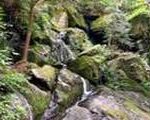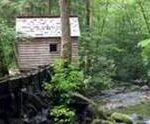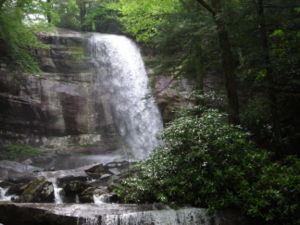Hiking
Gatlinburg Hiking
Gatlinburg, Tennessee sits at the main entrance to the Great Smoky Mountains National Park, so you’re only minutes from great hiking trails–several accessible right from downtown Gatlinburg. The Great Smoky Mountain National Park has over 150 trails to choose from with over 800 total miles of hiking trails. While staying in one of American Patriot Getaways’ luxury chalets, condos or cabins in Gatlinburg, Tennessee , choose from one or more of these hikes to see why these are the “Great” Smoky Mountains and make your visit unforgettable. Also, please call us if you have any questions about the hiking or about renting one of our Gatlinburg cabins.
Please take care when setting out into the National Park for a hike. Here are a few things you will need to know before you go!
- Always hike with another person.
- Always bring a small flashlight.
- Always bring water.
- All water taken from the backcountry should be treated.
- Let someone know your route and return time.
- Wear appropriate shoes.
- Carry a small first aid kit.
- Be informed about the weather & be prepared for quickly changing conditions. Check current weather conditions.


This easy 3.8 mile round-trip hike runs from the Sugarlands Visitor Center (also a must-see before you do anything else in the Park) to Gatlinburg Tennessee and back. This is one of the few trails in the Park that allows dogs (on a leash) and bicycles.
Described as moderate in difficulty, this 4-mile roundtrip hike rewards the hiker with a visit to one of the favorite waterfalls in the Park. This trailhead is very busy during the summer and weekends year-round. Access to the trailhead is via the Little River Road halfway between the Sugarlands Visitor Center and Elkmont Campground. Hikers can travel an additional 0.75 mile beyond the falls to see an old-growth forest.
 The Rainbow Falls Trail is fairly challenging if completed all the way to Mt LeConte. Allow an hour and a half to Rainbow Falls and four hours to Mt LeConte. Hikers will gain nearly 4,000 feet in elevation by the time they get to Mt. LeConte. The point of departure is at Cherokee Orchard Road – Turn at light #8 in Gatlinburg and follow the Airport Road 1 mile out of Gatlinburg into the Great Smoky Mountains National Park. The name will change from Airport Road to Cherokee Orchard Road. About 2.5 miles after entering the Park, Cherokee Orchard Road approaches the Rainbow Falls parking area. You will find the trail head at one edge of the parking area. Features of interest include the 2.8 mile point when you arrive at Rainbow Falls. At the 6.6 mile point you will come upon an Alum Cave Trail junction which leads left 0.1 mile to the LeConte Lodge.
The Rainbow Falls Trail is fairly challenging if completed all the way to Mt LeConte. Allow an hour and a half to Rainbow Falls and four hours to Mt LeConte. Hikers will gain nearly 4,000 feet in elevation by the time they get to Mt. LeConte. The point of departure is at Cherokee Orchard Road – Turn at light #8 in Gatlinburg and follow the Airport Road 1 mile out of Gatlinburg into the Great Smoky Mountains National Park. The name will change from Airport Road to Cherokee Orchard Road. About 2.5 miles after entering the Park, Cherokee Orchard Road approaches the Rainbow Falls parking area. You will find the trail head at one edge of the parking area. Features of interest include the 2.8 mile point when you arrive at Rainbow Falls. At the 6.6 mile point you will come upon an Alum Cave Trail junction which leads left 0.1 mile to the LeConte Lodge. Described as easy in difficulty, this 2-mile roundtrip hike is on a wide trail with a paved course that is easily accessible with a wheelchair or stroller. Rest room facilities and benches assist in navigating the path. When you reach the summit, you will be standing on the second highest peak east of the Mississippi River. The tower is reached via a wide ramp, making this trail an immediate favorite amongst families and groups with children. To get to Clingmans Dome, you want to be on Newfound Gap Road (the only road which completely traverses the Park). One-tenth of a mile south from Newfound Gap you will turn onto Clingmans Dome Road. From there, you’ll travel 7 miles, passing several pullouts for views, and end up in a parking area from which you walk a short distance to the top of the mountain. The turnoff to Clingmans is about 25 miles from Cherokee or 22 miles from Gatlinburg. Open from April through December, the road to Clingmans Dome is closed in winter.
Described as easy in difficulty, this 2-mile roundtrip hike is on a wide trail with a paved course that is easily accessible with a wheelchair or stroller. Rest room facilities and benches assist in navigating the path. When you reach the summit, you will be standing on the second highest peak east of the Mississippi River. The tower is reached via a wide ramp, making this trail an immediate favorite amongst families and groups with children. To get to Clingmans Dome, you want to be on Newfound Gap Road (the only road which completely traverses the Park). One-tenth of a mile south from Newfound Gap you will turn onto Clingmans Dome Road. From there, you’ll travel 7 miles, passing several pullouts for views, and end up in a parking area from which you walk a short distance to the top of the mountain. The turnoff to Clingmans is about 25 miles from Cherokee or 22 miles from Gatlinburg. Open from April through December, the road to Clingmans Dome is closed in winter.
Cades Cove hiking trails include: Abrams Falls, Ace Gap, Anthony Creek Trail, Beard Cane, Bote Mountain, Cades Cove Nature Trail, Cane Creek, Cooper Road, Crib Gap Trail, Gregory Bald Hiking Trail, Gregory Ridge Hiking Trail, Hannah Mountain, Hatcher Mountain, Indian Grave Gap, Little Bottoms, Rabbit Creek Hiking Trail, Rich Mountain Loop Trail, Rich Mountain Trail, Russell Field, Scott Mountain, and Wet Bottom horse trail. Cades Cove is also a wonderful trip by car for a relaxing Auto Tour.
To get to Cades Cove from Pigeon Forge, turn at Traffic Light #3, Wears Valley Road, travel approximately 14 miles to Townsend, Tennessee. From Townsend turn left onto 321 and follow the signs to Cades Cove.
From Gatlinburg, travel 2 miles on South 441 to the Sugarlands Visitors Center, turn Right onto Little River Road. A couple of miles into the ride you will come to the parking area for Laurel Falls, a truly magnificent double falls at the end of a 1 mile paved hike. After this amazing pit stop continue on the scenic drive on Little River Road through the national park to Townsend, Tennessee. From Townsend, Tennessee, enter the Great Smoky Mountains National Park and turn right at the “Y” onto Laurel Creek Road towards Cades Cove.



